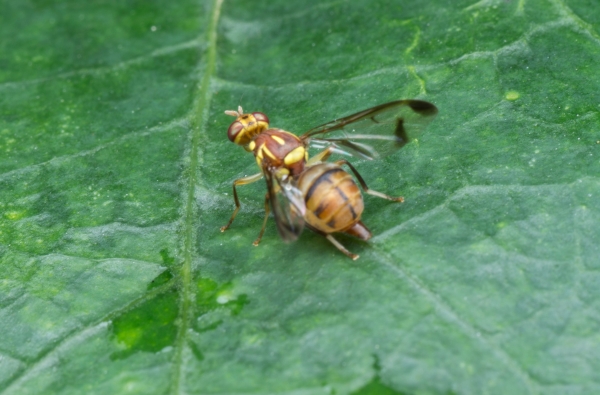Various control options for Queensland fruit fly
As spring approaches, it is important to turn our attention to fruit fly management. Early season intervention is critical to reduce the build-up of local fruit fly populations.
Queensland fruit fly Bactorcera tryoni (Qfly) is a major pest of fruit and vegetable crops across the eastern states of Australia. It causes significant damage to a wide range of fruits, including tomatoes, cucumbers, peaches, apricots, nectarines, and grapes.
Qfly infestations can cause reduced yields and quality, as well as increased costs for growers and market access challenges. Fortunately, there are a variety of management strategies that can be used to control Qfly populations and protect crops.
Some of the control methods include:
Cultural control
Cultural control methods involve manipulating the environment to make it less favourable for fruit fly. This should include crop hygiene activities such as removing any damaged fruit, or fruit remaining on trees after harvest operations. Likewise, any fallen fruit should be removed or macerated or crushed.
Qfly has a long list of hosts, and you should pay attention to these other host plants, especially any near your crops. Often early in the season alternate hosts such as early fruiting loquats, offer a refuge for fruit fly populations to build up unless managed.
Managing alternate hosts is challenging if they are not on your property, so it is important to encourage your neighbours, local council, and community to manage alternate hosts while explaining the negative impact of fruit fly.
Biological control
Biological control methods involve the use of natural predators and parasites to control pest populations. This can include encouraging parasitic wasps, such as the egg parasitoid wasp, Fopius arisanus and the larval parasitoid wasp, Diachasmimorpha kraussii. These wasps can effectively reduce QFF populations by attacking the eggs and larvae, respectively.
Chemical control
Chemical control methods involve the use of pesticides to control Qfly populations. These insecticides can be applied as sprays, baits, or as a soil drench. While chemical control can be effective in controlling Qfly populations, it is important to use pesticides responsibly and in accordance with label instructions to minimize the potential risks to human health and the environment. Longer term consideration should be given to minimising pesticide use to reduce the risk of pesticide resistance development and to minimise the impacts of social licence concerns of the public and trading partners.
Baiting and trapping
Baiting and trapping one of the best techniques currently available to manage endemic fruit fly. Growers can use a variety of traps, including fruit-based lures, protein baits, and pheromone-based traps, commonly known as the Male Annihilation Technique (MAT). Deployed traps need to be maintained and renewed to ensure that they remain effective throughout the season.
Monitoring
Monitoring for fruit fly is essential on-farm as it indicates if fruit flies are present and if their numbers are increasing or decreasing, which is useful to know if your control activity is working.
Integrated Pest Management (IPM)
The most effective way to manage Qfly populations is by using an integrated pest management (IPM) approach. This involves combining a variety of management strategies, including cultural, biological, chemical, and trapping methods. By using an IPM approach, growers can effectively control populations, while minimising the potential risks to human health and the environment.
Managing Qfly is challenging, but by using a combination of tools through an integrated pest management approach, growers can effectively control populations and protect their crops.
